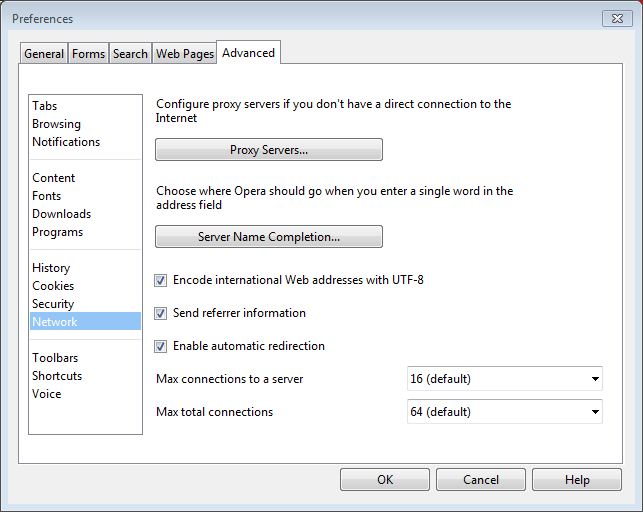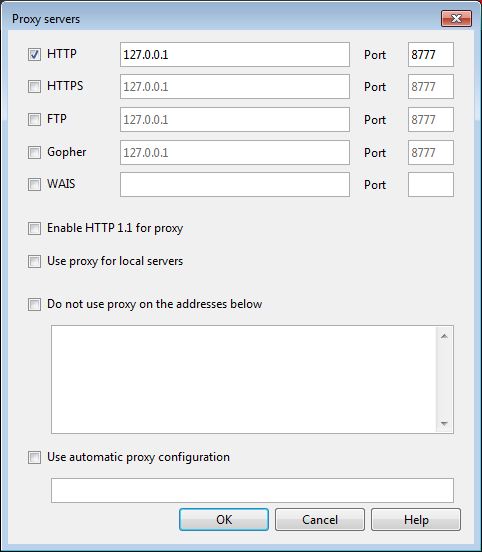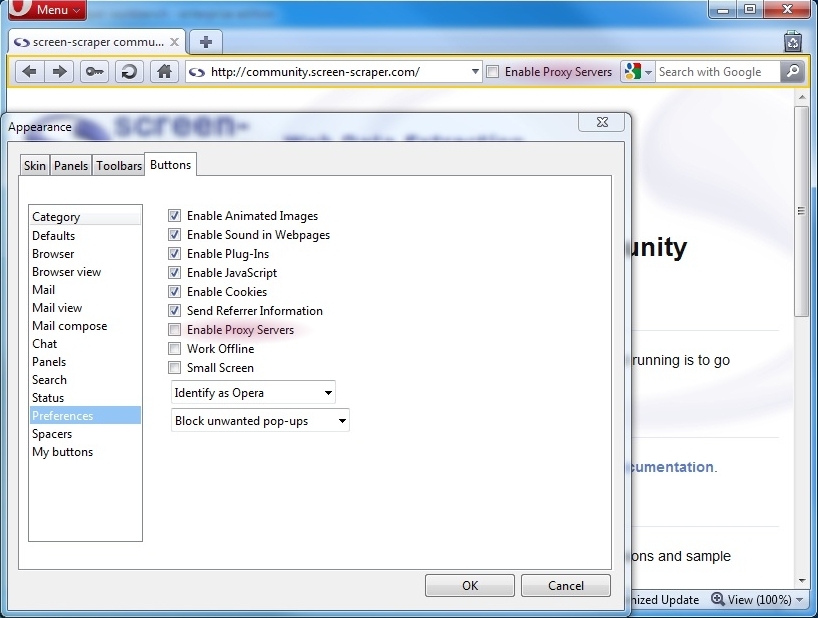Configuring Opera
Opera Proxy Settings
- Click Preferences in the menu.
Windows 7 users will need to select Preferences from the Settings menu after clicking to open Opera's menu.
Mac OS X users will need to select Preferences... from the Opera menu.
- Click on the Advanced tab.
- Click on the Network section listed near the bottom on the left.
- Click on the Proxy Servers... button.

- Enable the first HTTP checkbox, and enter localhost or 127.0.0.1 in the first field and 8777 in the port box.
If you have changed your proxy server settings to use a port other than 8777 then type your selected port in place of 8777.

If you're using a dial-up connection the setup will differ slightly. Instead of the LAN Settings button you'll want to find your dial-up connection under the Dial-up and Virtual Private Network settings dialog box, then configure it via the Settings button.
Depending on your operating system, instead of localhost you may need to use either 127.0.0.1 or the IP address of the machine. If you have trouble connecting to screen-scraper's proxy with your web browser, please see this FAQ.
Add a Quick On/Off Button to Toolbar
To simplify the whole process of turning the proxy server on and off, you can add a proxy button to a toolbar. One handy location is on the far right of the tab bar. To add the button,
- Right-click just about any of Opera's interface toolbars and select Customize....
You might need to select Appearance... explicitly before continuing.
- Click on the buttons tab.
- Select preferences to open its options.
- Drag and drop the Enable Proxy Servers button onto your toolbar.

Dragonfly
New to Opera 9.5.x is a feature called Dragonfly. You can access it by selecting Developer Tools from > Advanced, or alternately pressing control-shift-I. If you're familiar with Firefox's Firebug add-on, then you'll quickly recognize Dragonfly. It's built off of the same ideas, allowing you to manipulate CSS in realtime, seeing which properties are being overwritten by another. You can debug Javascript running on the page, find HTML elements on the page by clicking on them so that Dragonfly shows you the corresponding page source, see all final properties of elements, etc. It's a great tool for sifting through a website.
- Printer-friendly version
- Login or register to post comments
